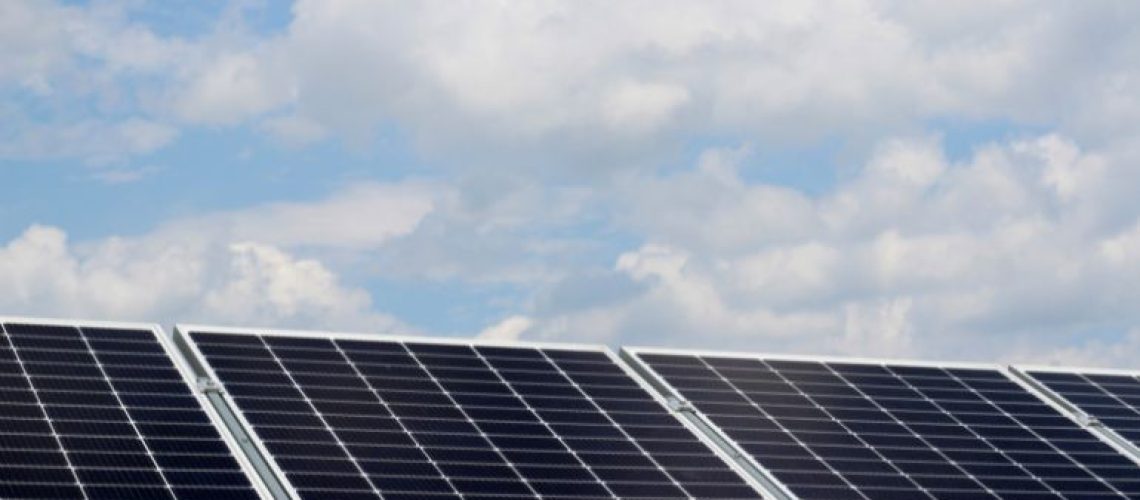A review by the SUN DAY Campaign of data just released by the Federal Energy Regulatory Commission (FERC) reveals that solar provided 86.8% of all new capacity in the first quarter of 2024. In March alone, solar accounted for 99.7% of capacity added, marking the seventh month in a row in which it provided more new U.S. electrical generating capacity than any other energy source.
Solar was nearly 100% of new capacity in March
In its latest monthly “Energy Infrastructure Update” report (with data through March 31, 2024), FERC says 52 “units” of solar provided 2,833 MW of new domestic generating capacity in March or 99.72% of the total. The balance consisted of 3 MW each of new biomass and oil capacity plus 1 MW each of new hydropower and natural gas capacity.
For the first quarter of this year, solar accounted for 86.79% (or 6,497-MW) of new generating capacity brought online while wind contributed another 12.40% (928-MW). Natural gas trailed with only 49 MW (0.65%) accompanied by 5 MW of oil, 3 MW of biomass, 3 MW of “other,” and 1 MW of hydropower.
Solar has now been the largest source of new generating capacity for seven months straight: September 2023 to March 2024. Further, new solar capacity added in the first quarter of 2024 was more than double the solar added in the first quarter of 2023 (2,774 MW).
Solar is now in fourth place for its share of U.S. generating capacity
The latest capacity additions have brought solar’s share of total available installed utility-scale (i.e., >1-MW) generating capacity up to 8.25%, surpassing that of hydropower (7.88%). Wind is currently at 11.77%. Solar and wind combined now account for more than a fifth (20.02%) of the nation’s installed utility-scale generating capacity. With the inclusion of biomass (1.14%) and geothermal (0.33%), renewables now claim a 29.37% share of total U.S. utility-scale generating capacity.
For perspective, just a year ago, solar’s share was 6.67%, while wind and hydropower were 11.51% and 7.97% respectively. The mix of all renewables totaled 27.67%.
Installed utility-scale solar has now moved into fourth place — behind natural gas (43.79%), coal (15.87%) and wind — for its share of generating capacity after having recently surpassed that of nuclear power (8.01%).
Solar on track to surpass the individual capacities of wind and coal within three years
FERC reports that net “high probability” additions of solar between April 2024 and March 2027 total 89,030 MW — an amount more than three and one-half times the forecast net “high probability” additions for wind (24,483-MW), the second fastest-growing resource.
FERC also foresees growth for hydropower (568-MW), geothermal (400-MW) and biomass (91-MW). The new 1,100-MW Vogtle-4 reactor in Georgia — which entered commercial operation in late April – will increase nuclear capacity modestly while coal, natural gas and oil are projected to contract by 20,077 MW, 2,386 MW, and 2,015 MW respectively.
If just FERC’s current “high probability” additions materialize, by April 1, 2027, solar will account for almost one-seventh (14.16%) of the nation’s installed utility-scale generating capacity. That would be greater than either coal (13.36%) or wind (12.77%) and nearly double that of either nuclear power (7.56%) or hydropower (7.40%).
The mix of all renewables would account for 35.73% of total available installed utility-scale generating capacity — rapidly approaching that of natural gas (40.72%) — with solar and wind constituting more than three-quarters of the installed utility-scale renewable energy capacity. Solar capacity alone would equal the combined capacities of wind, biomass and geothermal.
FERC’s “high probability” numbers for utility-scale solar as well as wind will almost certainly prove to be too conservative. In its March 2021 “Infrastructure” report, FERC projected that between April 2021 and March 2024, net “high probability” solar additions would total 41,238 MW, while those for wind would reach 21,888 MW. In reality, solar additions during that three-year period totaled 49,480 MW — i.e., almost a fifth (19.99%) higher while actual wind capacity additions reached 26,910 MW or nearly 23% greater than FERC’s forecast.
Moreover, FERC reports that there may actually be as much as 214,882 MW of net new solar additions in the current three-year pipeline in addition to 73,732 MW of new wind and 7,719 MW of new hydropower.
In addition, inasmuch as FERC only reports data for utility-scale facilities, its data do not reflect the capacity of distributed renewables, notably rooftop solar PV. According to the U.S. Energy Information Administration (EIA), small-scale solar PV is estimated to account for nearly a third of the nation’s electrical generation by solar and a larger share of total installed solar capacity.
This suggests that the total capacity of distributed and utility-scale solar combined is significantly more than the 8.25% FERC reported as solar’s share of total capacity at the end of March. It is perhaps closer to 12.0% and may be on track to approach or exceed 20.0% within three years.
That, in turn, could also bring the generating capacity provided by the mix of all renewables close to – or even surpass — that of natural gas within three years.
“FERC’s data for the first quarter seem to confirm forecasts by multiple sources that solar will dominate new capacity additions in 2024,” noted the SUN DAY Campaign’s executive director Ken Bossong. “And it is not unreasonable to suggest that solar’s growth this year will exceed expectations.”
News item from the SUN DAY Campaign



